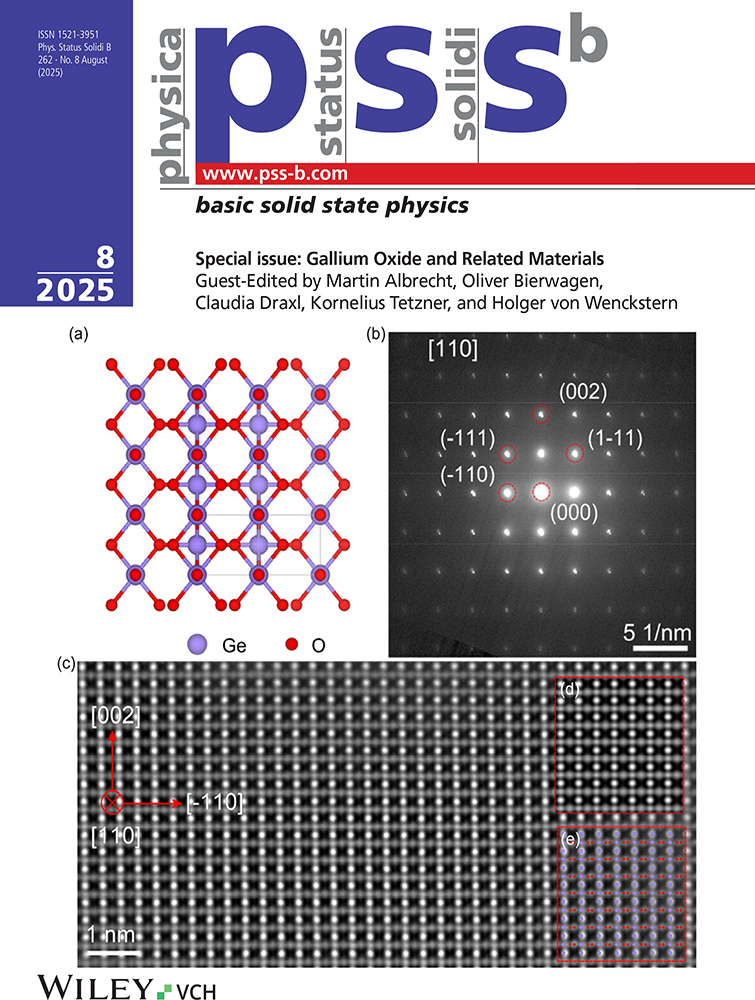Two-particle energy spectrum in dense electron–hole plasmas
Domstr. 10a, D-17487 Greifswald, Federal Republic of Germany.
Abbéstr. 2-12, D-10587 Berlin, Federal Republic of Germany.
Abstract
enTwo-particle (exciton) states in equilibrium electron–hole plasmas of highly excited semiconductors are determined. In the framework of the Green's function technique, an effective (two-particle) wave equation allows to account for the influence of the surrounding plasma in terms of (dynamic) single-particle self-energies, Pauli blocking factors, and a dynamic effective potential correction. This equation is solved by expansion of the wave function in terms of Coulomb eigenfunctions. No rational or pole approximation for the dielectric function is used. Exciton binding energies and their imaginary parts (damping of the states) as well as continuum edges are given for Ge and GaAs model systems.
Abstract
deEs werden Zwei-Teilchen-(Exzitonen-)Zustände in Elektron-Loch-Gleichgewichtsplasmen in hochangeregten Halbleitern bestimmt. Im Rahmen der Green-Funktionstechnik kann in einer effektiven (Zwei-Teilchen-)Wellengleichung der Einfluß des umgebenden Plasmas durch (dynamische) Ein-Teilchen-Selbstenergien, Phasenraumverbrauchsfaktoren und eine dynamische effektive Potentialkorrektur berücksichtigt werden. Diese Gleichung wird mittels Entwicklung der Wellenfunktion nach Coulomb-Eigenfunktionen gelöst. Eine rationale oder Pol-Näherung für die dielektrische Funktion wird nicht verwendet. Exzitonen-Bindungsenergien und ihre Imaginärteile (Dämpfung der Zustände) sowie Kontinuumskanten werden für ein Ge- und ein GaAs-Modellsystem angegeben.




